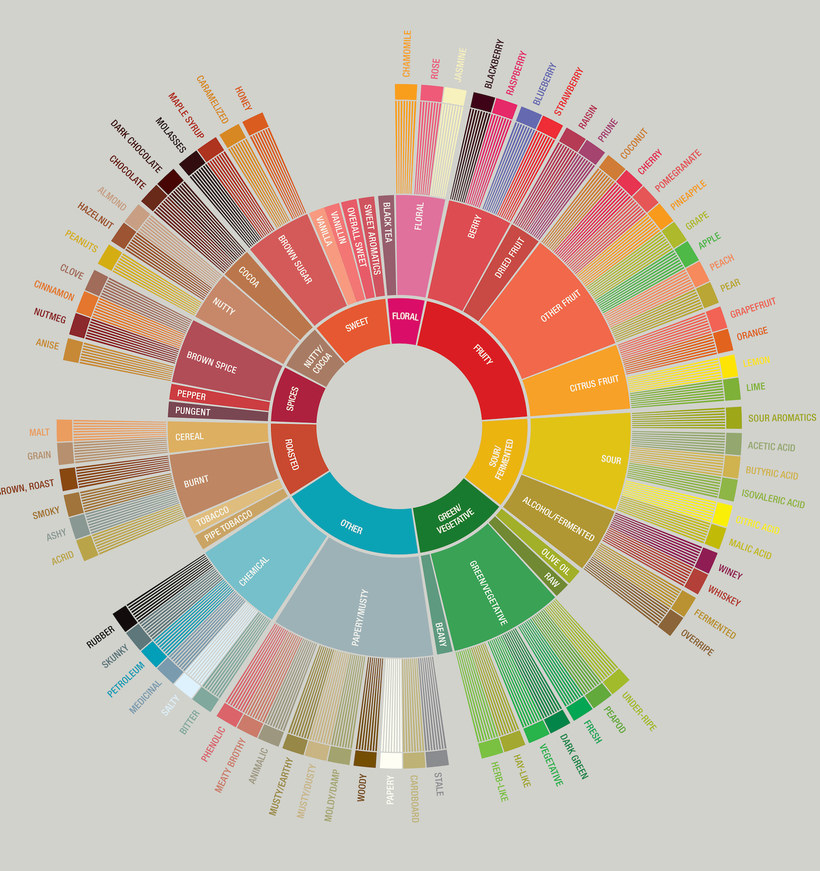Where To Begin
When we describe coffee, we should concentrate on the following four areas:
Body: This refers to the weight and thickness of the coffee in your mouth, similar to the lightness of white wine or heaviness of red wine. They’re normally described as light, medium, and full. When we describe thickness, we’re only referring to black coffee. That’s because the original thickness will be diluted if you add milk or other liquids to it.
Acidity: This term is often confused with bitter or sour. But if you take it more literally, acidity just refers to how lively or tangy your palate responds when the coffee touches your tongue. Similar to how sparkling water will activate a sensation in your mouth, coffee with a high acidity will do the same. Likewise, a lower acidity will create a less intense reaction – a smoother one.
Aroma & Flavor: I combined the last two areas because in the past, flavor wheel covers both aroma and flavors. Aroma is literally how the coffee smells, and flavor is how it tastes. There are tons of variations here and is what makes coffee tasting so fun!
The Coffee Profile
The aroma and flavor in coffee are mainly derived from where it’s grown. That’s because different coffee growing regions have different environments and growing methods. The flavor is typically dictated by the soil consumption, moisture levels, when it’s picked, and how it’s processed. As such, through different combinations of growing regions and methods, the note in coffee varies drastically.
For example, Ethiopian and other African coffee are typically more acidic and contain more of a citrus and orange note. However, coffee from Central and South America normally has more of a chocolatey and nutty note to it.
Even though much of the coffee profile is dictated by the producers and farmers, that’s not to say roasters and grinders don’t have a say. The roasters can control the combination (or blend) of coffee beans used, and the grinders can control how the flavors are activated. You can learn more home coffee brewing here.
The Flavor Wheel

What to Remember
Coffee professionals spend years developing their palate, experimenting different flavors, and putting all their knowledge and experience into practice. It won’t be easy at first, but don’t be disheartened if you feel like you’ve not made strides in a few months’ time. Keep in mind that experts have difficulties sometimes – they’ll either have issues determining how a certain cup of coffee taste, or even potentially coming up with contradicting conclusions with other experts.

